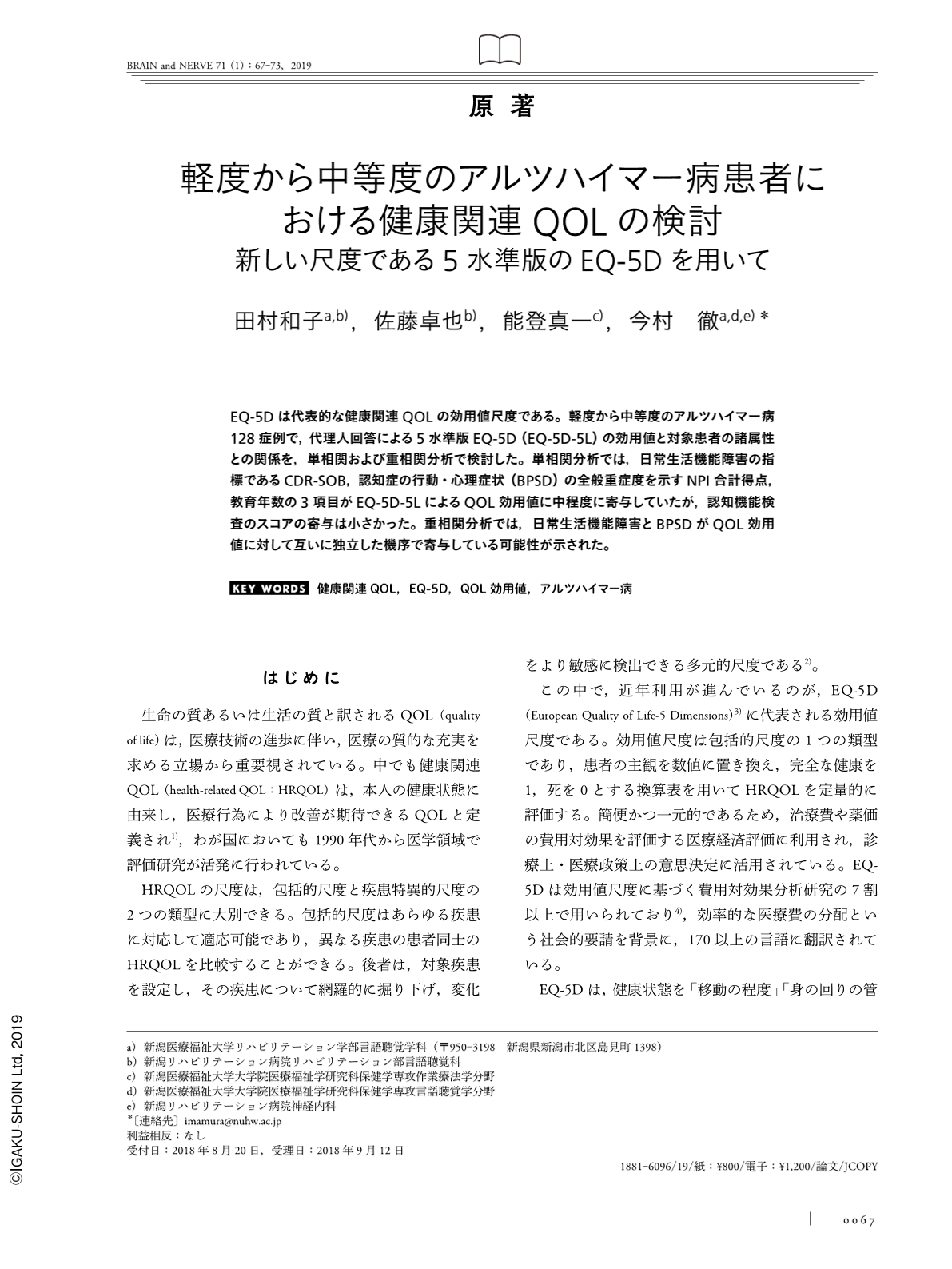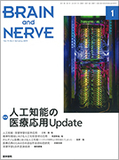Japanese
English
- 有料閲覧
- Abstract 文献概要
- 1ページ目 Look Inside
- 参考文献 Reference
EQ-5Dは代表的な健康関連QOLの効用値尺度である。軽度から中等度のアルツハイマー病128症例で,代理人回答による5水準版EQ-5D(EQ-5D-5L)の効用値と対象患者の諸属性との関係を,単相関および重相関分析で検討した。単相関分析では,日常生活機能障害の指標であるCDR-SOB,認知症の行動・心理症状(BPSD)の全般重症度を示すNPI合計得点,教育年数の3項目がEQ-5D-5LによるQOL効用値に中程度に寄与していたが,認知機能検査のスコアの寄与は小さかった。重相関分析では,日常生活機能障害とBPSDがQOL効用値に対して互いに独立した機序で寄与している可能性が示された。
Abstract
Objective: To investigate the relation between health-related quality of life (QOL) rated by proxy and various characteristics of patients with mild-to-moderate Alzheimer's disease (AD) using European Quality of Life-5 Dimensions (EQ-5D). Patients: We recruited 128 AD patients with a Clinical Dementia Rating (CDR) of 0.5 (very mild) to 2 (moderate) who were cognitively assessed using the Mini-Mental State examination, Alzheimer's Disease Assessment Scale, and Frontal Assessment Battery, and whose family caregivers underwent an interview with CDR, Neuropsychiatric Inventory (NPI) and the five-level version of the EQ-5D for the proxy rating. Methods: We obtained Pearson's correlation coefficients between the EQ-5D utility score and each demographic, clinical, and cognitive measure. All measures with moderate or large effect sizes (0.3 or more of absolute value of the correlation coefficient) were included in a multiple correlation analysis. Results: The CDR sum of boxes (CDR-SOB), NPI total score, and educational attainment showed moderate effect sizes in the single correlation analyses. The effect sizes of the cognitive measures were small. The multiple correlation analysis showed that the CDR-SOB and NPI total score independently contributed to the EQ-5D utility score. Conclusion: Two independent factors, that is, overall severities of functional impairment and behavioral and psychological symptoms of dementia seemed to contribute to QOL in AD patients.
(Received August 20, 2018; Accepted September 12, 2018; Published January 1, 2019)

Copyright © 2019, Igaku-Shoin Ltd. All rights reserved.


